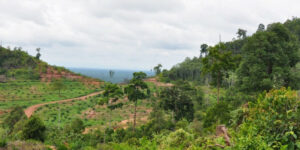
New research from Nelson Institute and Department of Forest & Wildlife Ecology assistant professor, Zuzana Buřivalová shows that the health of protected forests is dependent on the status of the areas surrounding them.
Through an analysis of protected forests worldwide, Buřivalová discovered that protected forests are unlikely to be cut down when they are surrounded by intact forests. She hopes that the results of this study will help governments to better identify those forests with a greater risk of deforestation and direct resources to help.
“We wanted to find out what happens to the forests in protected areas when there is less and less forest around them — when their buffer zone starts getting less dense and more like a mosaic of forest and fields,” says Zuzana Buřivalová, lead author of the new study and a professor of forest and wildlife ecology at the University of Wisconsin–Madison. “Based on the percentage of forest cover around a national park, we can now predict and say: ‘Okay you should be careful right now’ or ‘You don’t have to worry just yet.’”